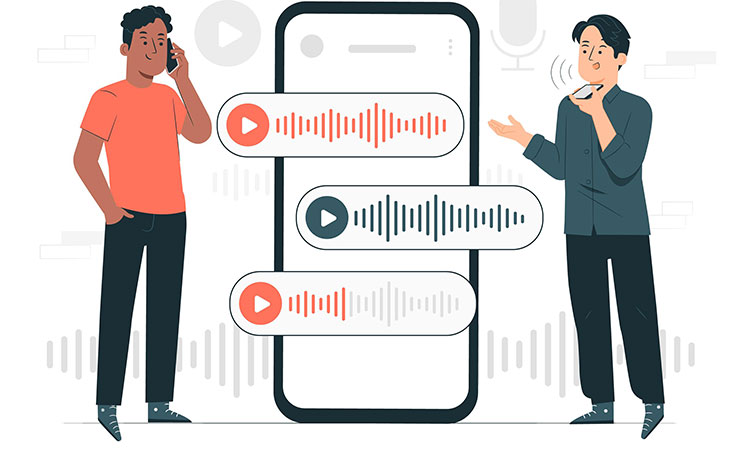We’ve all experienced the annoyance of struggling to hear the person on the other end of the line clearly. This frustration becomes even more pronounced when you’re trying to communicate with a business about an important issue.
Some callers will hang up and try again, but critically many will simply give up and turn to a competitive offering. This article will delve into the importance of strong audio quality during calls, the factors that can diminish it, and the imperative for organizations like yours to proactively employ voice call quality testing. Testing and monitoring enables you to unearth and rectify these issues before they ever have a chance to affect your customers.
What happens if call quality is low?
Modern customers expect a seamless and high-quality experience when they contact a business. However, the clarity of the agent’s voice at the other end of the line is often not a concern for them, until it becomes an issue. Such problems can have lasting and adverse effects on a caller’s perception of your brand.
Audio quality issues
Regrettably, most organizations only become aware of audio quality issues when impacted callers report them. Yet, research indicates that 96% of individuals do not file reports when they encounter problems. As a result, businesses may remain oblivious to these issues for extended periods. Even when callers do choose to report problems, crucial troubleshooting information, such as precise call times, exact calling locations, call paths, and the equipment and network used, is frequently lacking.
Despite its poor audio quality
Even when callers don’t hang up and pursue the call (despite its poor audio quality), it typically leads to the need for the agent, caller or both to repeat themselves multiple times. This not only creates a frustrating experience for both parties, but also significantly increases the average handling time (AHT) for calls. This, in turn, leads to greater costs, heightened resource demands, decreased productivity, and missed opportunities.
What causes poor call quality?
Factors influencing call quality can be categorized into two distinct types: those related to users and those related to the network. Critically, this poor audio quality can dramatically impact the clarity and reliability of any phone call. These factors can be introduced to the call path at any time, intermittently, and without prior warning. Some of the elements that can give rise to subpar audio quality include:
| User related | Network related |
| Equipment quality e.g. damaged headset | Service provider issues |
| Environmental factors or conditions | Codec incompatibility or compression |
| Noise and interference | Jitter |
| Voice distortion | Packet loss |
| Echo | Latency |
| Inadequate bandwidth | Low bandwidth |
In general user
In general, user-related issues can be identified and resolved more quickly and easily than network-related issues. This discrepancy arises because network problems can surface at any point along the call path, and for international calls, these paths can be exceedingly complex, traversing multiple networks, carriers, and even countries.
How do you know when voice quality is poor?
Over the years, testing standards have been created to help organizations more easily identify when their audio is suboptimal and requires improvement. These standards include Mean Opinion Score (MOS), Perceptual Evaluation of Speech Quality (PESQ) and Perceptual Objective Listening Quality Analysis (POLQA). However, while each of these standards can readily pinpoint issues on the user’s end, challenges persist in identifying the cause of and solution to network-related problems.
Resolving such issues
Resolving such issues necessitates proactive testing and monitoring tools to efficiently spot any problems and ensure their swift resolution. These tools can be configured with benchmarks and thresholds. When your audio quality dips below these, your team will automatically receive an alert, complete with comprehensive call logs and details. This enables them to swiftly understand the issue and work toward its resolution, thereby reducing the mean time to repair (MTTR) and minimizing disruptions for your agents and customers.
Why should you monitor your call quality?
Maintain strong audio quality
Through ongoing, proactive monitoring of your call quality metrics, you can provide an optimal customer experience that not only meets, but ideally exceeds the expectations of your customers.
Maintain strong audio quality
Through ongoing, proactive monitoring of your call quality metrics, you can provide an optimal customer experience that not only meets, but ideally exceeds the expectations of your customers.
Enhance relationships with your carriers
Monitoring your numbers empowers you to engage more effectively with your carriers, enabling more swift resolution of any call quality issues. This is because you’ll be able to pinpoint exactly when issues occurred and provide all the relevant call detail records (CDRs) needed to resolve the issue. Additionally, you can more effectively ensure that carriers adhere to their service level agreements (SLAs).
Reduce MTTR
The MTTR will be reduced considerably as you can use the CDRs provided from your test calls to promptly identify, troubleshoot and rectify problems. This leads to less downtime for your contact numbers and an improved audio quality experience for your customers and agents.
Detect intermittent issues
Continuous call quality monitoring assists in the rapid identification of areas for improvement before they escalate into major problems. It also helps in uncovering intermittent issues with your carriers and routing, which are typically challenging to troubleshoot. Additionally, monitoring helps you to identify trends, such as transcoding, which can substantially diminish audio quality and is often initiated by your carriers without your knowledge or agreement.
Elevate customer satisfaction
High-quality audio guarantees that customers can engage with your agents clearly, diminishing frustration and enhancing their overall experience. This ultimately results in higher customer satisfaction scores for your business. Satisfied customers are also more likely to remain loyal and recommend your brand to others.
Guarantee quality
Audio quality monitoring is a fundamental component of quality assurance programs. It empowers organizations like yours to maintain a consistent service standard and pinpoint areas for future improvements.
Reduce costs
By promptly identifying and resolving audio quality issues, organizations can reduce the number of repeat or follow-up calls required, which not only enhances the customer experience, but also reduces your operational costs. Additionally, AHT per a call will be reduced as there is no longer a need for repetitions or clarifications due to poor audio quality.
Ensure compliance
In certain industries, such as finance or healthcare, there are strict regulations regarding audio quality and the handling of customer information. Monitoring audio quality helps to ensure and prove your compliance with these regulations.
Conclusion
Call quality testing and monitoring allows you to ensure optimal communications between your agents and customers. It also eliminates the blind-spots that plague many organizations when it comes to their telecoms networks. Critically, it reveals the true nature of your customers’ experiences with your brand.
And when it does identify problems, it provides your team with the information needed to promptly identify and rectify the issue whether it is on your business network or your carriers.
Cyara revolutionizes the way businesses transform and optimize their customer experience
Cyara revolutionizes the way businesses transform and optimize their customer experiences. Cyara’s AI-based CX Transformation Platform empowers enterprises to deliver flawless interactions across voice, video, digital, and chatbot experiences. With Cyara, businesses improve customer journeys through continuous innovation while reducing cost and minimizing risk. With a 96% customer retention rate and world-class Net Promoter Score (NPS), today’s leading global brands trust Cyara every day to deliver customer smiles at scale.






